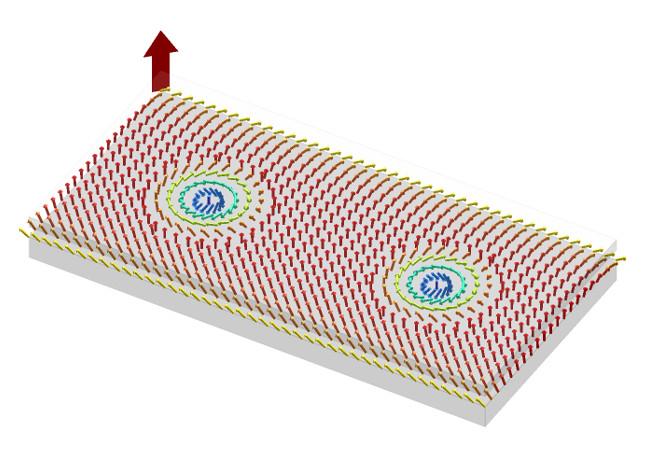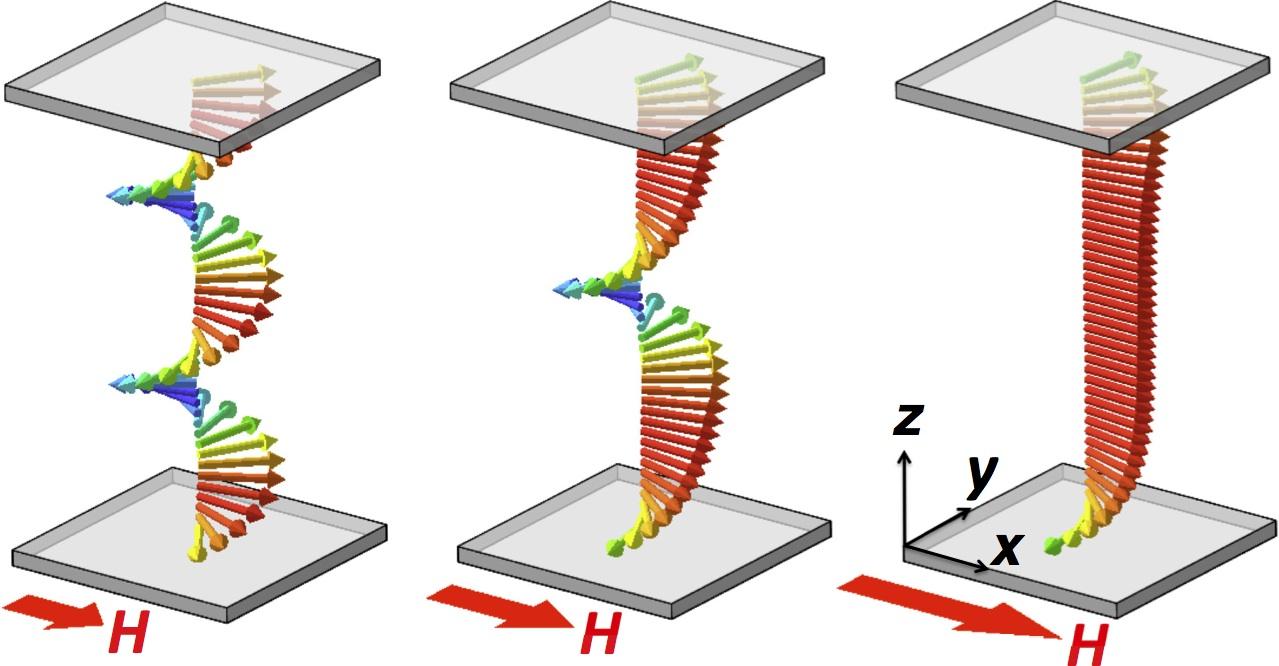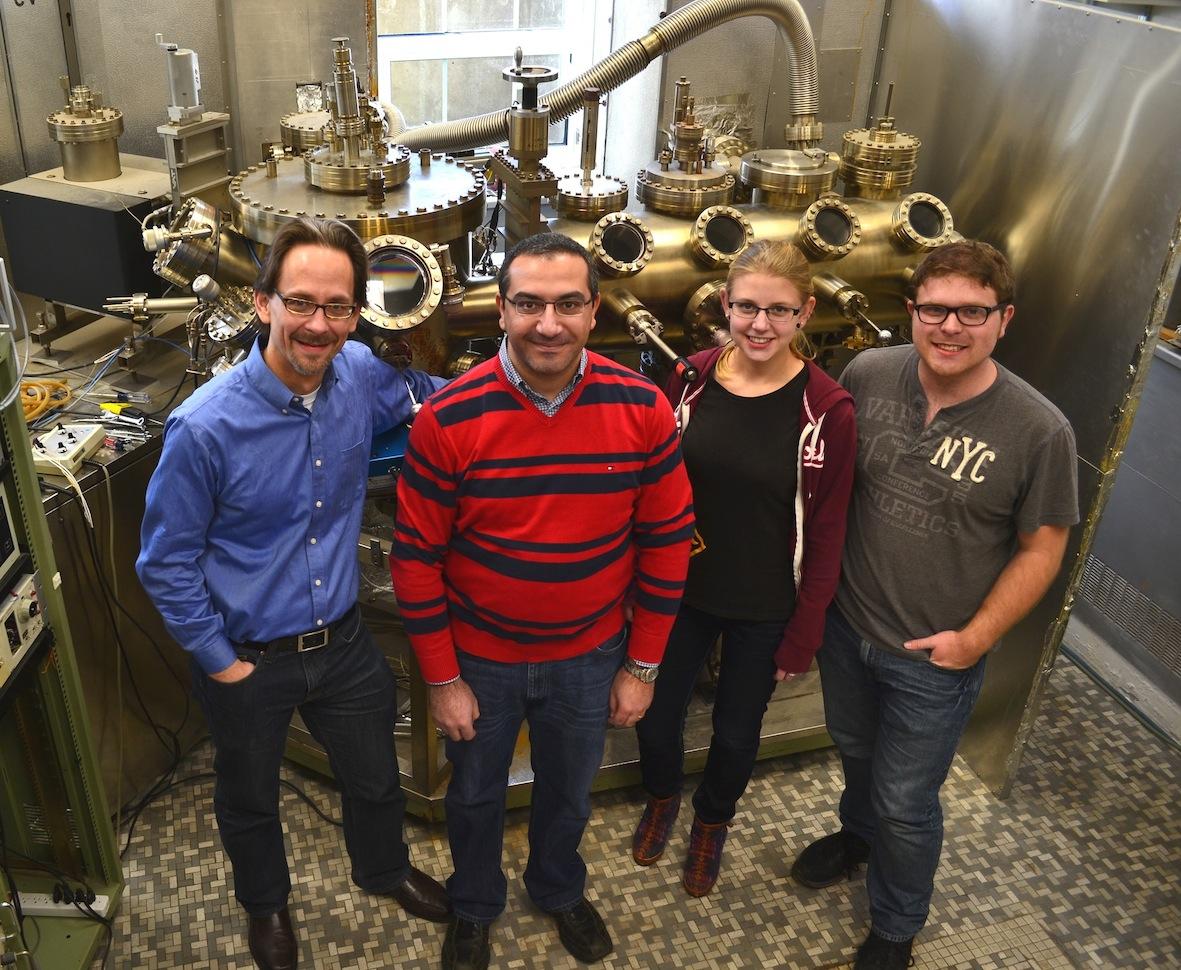Nanomagnetic materials


What we research

From left to right: Ted Monchesky, Samer Kahwaji, Alyson Spitzig, and Simon Meynell, in front of the molecular beam epitaxy chamber used to create chiral magnets. This chamber is on long-term loan from the National Research Council of Canada.
We investigate magnetic textures in chiral magnets-materials that provide novel ways of thinking about spin control. The chiral interactions create magnetic knots known as skyrmions that are nanoscale in size. The topological nature of these textures prevents them from untangling and thus creates stable magnetic bits that could ultimately be used for information storage.
We currently grow nanolayers of chiral magnets by molecular beam epitaxy and explore the influence of strain and nanoscale size on the magnetic structure. We use a combination of SQUID magnetometry, magnetoresistance, Hall effect and x-ray measurements in-house to characterize our samples, as well as neutron reflectometry, small angle neutron scattering and synchrotron measurements.